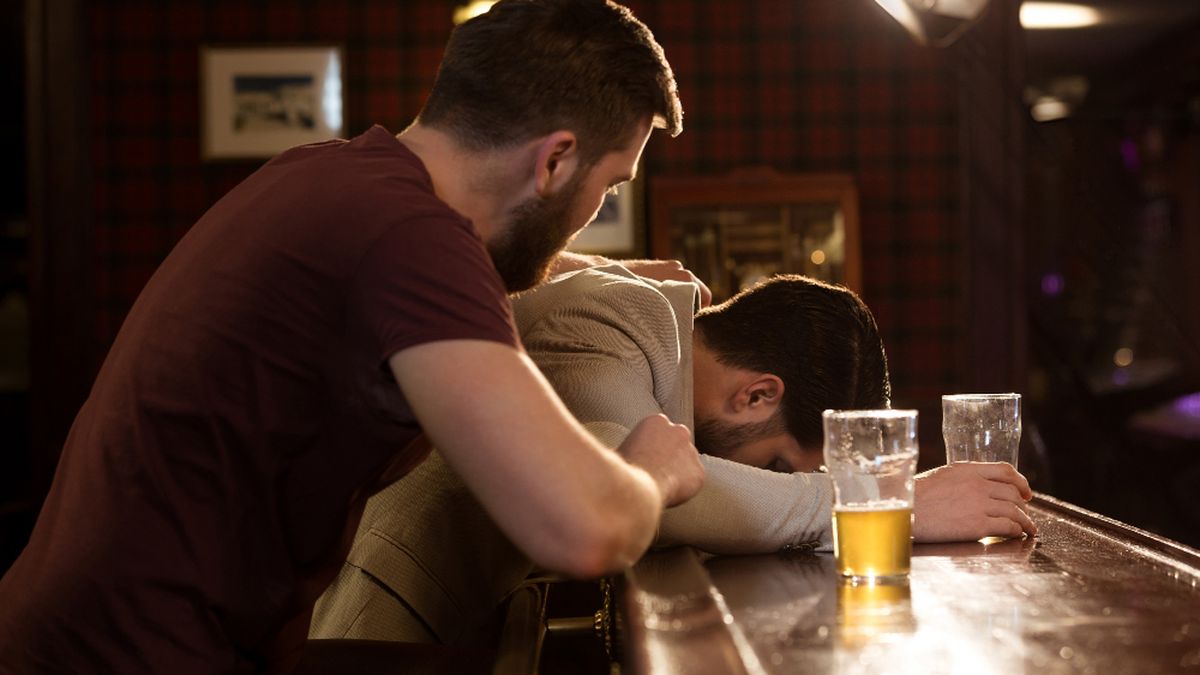The intoxicated They die from hypothermia or hypoglycemia. In the collective imagination, the “options” for help and treatment are quite diverse.
Never place an alcoholic person in cold water or leave him or her outdoors. An alcoholic person loses heat; the cold does not wake him or her up, but rather aggravates his or her symptoms.
Although for many years, even on call, caffeine ampoules were prescribed, it has been shown that this can cause a seizure. In addition, in the case of altered sensorium (low level of consciousness) it can cause aspiration and the contents of this hot infusion can go into the lungs instead of the stomach.
If the level of consciousness is low, this can cause asphyxiation or pneumonia by aspiration of one’s own vomit. This measure, although questionable, is only useful if the level of consciousness is adequate and the alcohol intake is recent. In addition, it can cause damage to the mucosa of the digestive tract.
Instead, Yes, you should hydrate the patient if he is conscious, encourage hydration with water and, if vomiting occurs, help him expel it correctly.
Place the patient in the lateral safety position. To do this, lie him on his back, raise his left arm above his head and bring his right heel towards his buttock. Then, place your right hand behind his neck, as if you wanted to scratch your back, and finally, turn him over to the left side.
The patient should lie down with his head on his side so that vomiting will not affect the airway.
Control your breathing and your heart rateWith luck, within 6 to 8 hours the effects of the alcohol will have worn off.
Cover them with a blanket, jacket or anything else that is within reach and will do the trick. Remember that these people lose heat and the intention is to prevent it from dissipating as much.
The well-known “hangover”, which consists of nausea, clouding of consciousness and headache, is secondary to the toxic effect of alcohol on the blood, mainly due to dehydration at the cerebral level.
Like all organs, the brain grows and develops over time. There are areas that perform basic functions (breathing, standing, or sleeping) and other more complex ones, with elaborate functions, for example, generating ideas, controlling primitive impulses (sex, food, etc.) and speaking. Psychoactive substances and alcohol affect these areas and cause structural modifications that lead to irreparable damage in many cases. In addition, the organ experiences a phenomenon of neuroplasticity, that is, it adapts to the action of the substance and modifies its real structure. This is one of the mechanisms of addiction and, in fact, more than 50% of addicted people in the world began their consumption during childhood and adolescence. As if that were not enough, adolescents have brain regions, such as those in the frontal area – which controls impulses – that are immature, which is why, and due to other psychosocial phenomena, they believe themselves to be indestructible and fall into reckless and risky attitudes that lead to accidents.
What should you do when dealing with someone who has consumed too much? The first thing is not to confront them. A paternalistic or authoritarian attitude towards someone who is under the influence of alcohol or some psychoactive substance is counterproductive. In addition, if they have a problematic consumption, confronting them will cause them to distance themselves and will make it difficult to approach them later.
However, you should offer food and hydration during consumption. It is recommended that for every glass of alcohol you drink two glasses of water.
We advise against consuming it quickly: do so slowly and remember that the highest concentration in the blood occurs 40 minutes after ingestion.
Talking with companions is usually an efficient and sufficient approach to strengthen and raise awareness within your support group.
The best way to prevent is to educate and the best way to educate is by example.
Medical toxicologist, director of Toxicology Today.
Source: Ambito
I am an author and journalist who has worked in the entertainment industry for over a decade. I currently work as a news editor at a major news website, and my focus is on covering the latest trends in entertainment. I also write occasional pieces for other outlets, and have authored two books about the entertainment industry.




